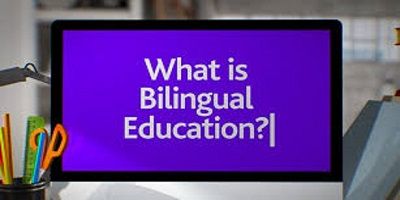Bilingual Education
Bilingual Education is an educational approach that aims to provide instruction in two languages, typically the native language of the students and another language, such as English, in order to help students become proficient in both languages. This approach is used in various educational settings around the world and is designed to benefit students who come from linguistically diverse backgrounds.
There are several different models of bilingual education, including:
- Transitional Bilingual Education: In this model, students are initially taught in their native language while gradually transitioning to instruction in the second language (e.g., English). The goal is for students to become proficient in both languages over time.
- Dual Language or Two-Way Immersion Programs: These programs typically involve a mix of students from different language backgrounds. Instruction is provided in both languages, and the goal is for all students to become bilingual and bi-literate. This approach promotes cross-cultural understanding and language proficiency in both languages.
- Maintenance of Bilingual Education: This model is often used in communities where there is a significant population of students who speak a particular language as their first language. The goal is to maintain and strengthen the students’ proficiency in their native language while also teaching them a second language.
- Content-Based Bilingual Education: In this approach, students are taught academic content in both languages. For example, mathematics may be taught in one language, while science is taught in the other. This approach is designed to help students develop proficiency in both languages while also learning subject matter content.
Benefits of Bilingual Education
Bilingual education offers a range of benefits to students and society as a whole. Here are some of the key advantages:
Bilingual Proficiency: The most obvious benefit is that students who receive bilingual education become proficient in two languages. This opens up a wider range of communication and employment opportunities, as they can interact with and understand people from different linguistic backgrounds.
Cognitive Benefits: Bilingual education has been associated with cognitive advantages, including improved problem-solving skills, greater mental flexibility, and enhanced creativity. Learning and switching between two languages can exercise and strengthen the brain.
Academic Achievement: Research has shown that students in bilingual programs often perform as well as or even better than their monolingual peers on standardized tests. They may also excel in specific subjects due to their language proficiency.
Cultural Awareness and Sensitivity: Bilingual education can foster cultural awareness and sensitivity. When students learn a second language, they also gain insight into the culture and traditions associated with that language. This can lead to a more open-minded and globally aware society.
Career Opportunities: In an increasingly globalized world, bilingualism is a valuable skill in the job market. Many employers seek bilingual or multilingual candidates because they can communicate with a broader range of customers, clients, and colleagues.
Extra Benefits…
- Enhanced Problem-Solving Skills: Bilingual individuals often demonstrate better problem-solving skills. They can approach problems from multiple linguistic and cultural perspectives, which can lead to more innovative solutions.
- Improved First-Language Skills: Paradoxically, bilingual education can also benefit a student’s first-language skills. In the process of learning a second language, students often gain a deeper understanding of the structure and grammar of their native language.
- Reduced Stereotyping and Bias: Bilingual education can reduce stereotypes and biases by promoting cross-cultural understanding. When students interact with peers from different linguistic backgrounds, they are more likely to challenge stereotypes and develop empathy.
- Bicultural Identity: Bilingual individuals often develop a bicultural identity, which allows them to feel at home in more than one culture. This can lead to a sense of belonging and connectedness to multiple communities.
Final Words
Bilingual Education programs can have several benefits, including improved academic achievement, cognitive benefits, enhanced cross-cultural understanding, and increased career opportunities. However, the success of BE programs depends on various factors.
Including the quality of instruction, support for students’ native languages and cultures, and the commitment of educators and the community. It’s important to note that the specific design and implementation of bilingual education programs can vary widely depending on the educational system, the needs of the students, and the goals of the program.
